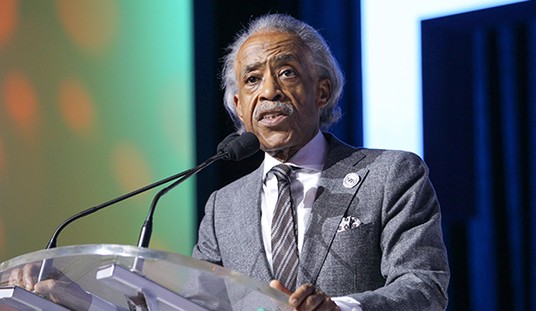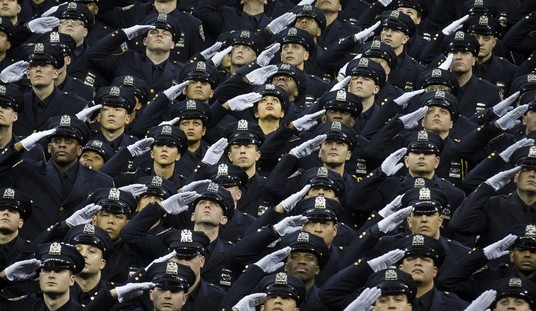The biggest sporting event in the world will begin on Friday, when 32 teams will compete for the World Cup, the most coveted trophy on the planet.
At least, it’s coveted everywhere outside the United States. A great, collective yawn is how most Americans are greeting the news of the soccer tournament getting underway in South Africa. Why this is so is truly mystifying. Millions of children play the sport. Soccer camps abound across the country. The sport is sponsored and promoted by the usual corporate suspects who, along with the rest of us soccer fans, continue to wait for the sport to take off in a big way in the U.S. and lead to the game becoming a major sport.
It’s a familiar refrain. When Henry Kissinger and other high-level American soccer fanatics lobbied the International Federation of Association Football, commonly known by its acronym FIFA, to allow the U.S. to host the World Cup tournament in 1994, it was believed that bringing the event to America would supply the impetus for a huge burst of interest and excitement about the game in the United States. In anticipation of this, the MLS professional league was born, and a big push for corporate sponsors to help the national team become competitive on the world stage was undertaken.
At first, it appeared the naysayers would have to eat dirt. The plucky U.S. national team shocked the world by moving through to the round of 16 by pulling off one of the most stunning upsets in World Cup history, beating Colombia 2-1. But while the stadiums where games were played were filled to capacity, and TV ratings exceeded expectations, the response of the country could hardly be termed spectacular. About 9 million people tuned in to the championship game that year — about 10% of the audience for the Super Bowl.
The nascent MLS floundered as well. Despite those millions of kids playing in youth leagues, most stadiums were embarrassingly empty. Then, in 1998, with expectations for the U.S. national team high for the World Cup in France, our boys finished dead last, including a humiliating defeat at the hands of Iran. It appeared that 1994’s modest burst of interest in the sport was a mirage.
The historic run to the quarterfinals by the U.S. national team at the 2002 World Cup — the first time a U.S. squad had advanced that far since 1930 — didn’t work any magic either. TV ratings were about what they were in 1994. And the unmitigated disaster in 2006 (the U.S. was held to one goal in three games) didn’t help. It seemed that each World Cup cycle brought predictions of the sport taking off to the stratosphere in America only to have the game lay an egg.
In a sports-mad country like America, why is this? Some pundits go ludicrously far in ascribing political reasons to this failure:
For sure, there may be a number of reasons that is the case but my suspicion is that the so-called “beautiful game” is not so beautiful to American sensibilities. We like, as good small “d” democrats, our underdogs for sure but we also still expect folks in the end to get their just desert. And, in sports, that means excellence should prevail. Of course, the fact that is often not the case when it comes to soccer may be precisely the reason the sport is so popular in the countries of Latin America and Europe.
There is a reason that every single World Cup final since 1950 except one (1978) has involved either Germany or Brazil, and it’s not because they are dominated by other teams. There may, indeed, be political reasons for America’s failure to embrace the sport, but that’s not one of them. It may be as simple as our desire to consciously separate ourselves from Europe and the rest of the world — an American exceptionalism that affects even the games we play.
But leaving politics aside, the reason that soccer has not arrived (and may never rise) to the first tier of professional sports in America is tradition and timing. There is no American soccer “tradition” as there is in baseball and football. Even basketball enjoys a tradition far beyond any national memories we have of American soccer.
Couple that with the fact that the sports calendar is crowded enough as it is, and the addition of another sport is just not practical. The MLS has adapted to the marketplace, largely abandoning the huge football stadiums and settling in smaller, more intimate venues like the Chicago Fire’s Toyota Park in Bridgeport, Illinois, that seats 20,000, or the 27,000-seat Home Depot Center in Carson, California, that hosts Los Angeles Galaxy games. While not exactly thriving, the league is mostly keeping its head above water and now serves as a legitimate feeder league for national team talent.
Salaries are not extravagant. Most importantly, several teams have deals with some of the club teams in Europe where they can “loan” their players out. This has led to some key national team members like Landon Donovan getting invaluable experience playing against the top players in the world.
That experience may be the key to the hopes of this year’s national squad. Where in 1994, only two or three national team members had experience in Europe, the 2010 edition of Team USA features several bona fide international standouts. Most of the others perform as serviceable pros in some of the top leagues in Europe.
This has once again led to high expectations for the U.S. team. Ranked 14th in the world by FIFA, and drawing what most analysts are calling the weakest group in the tournament, Team USA is expected to finish second to England and move on to the round of 16. At least this goal is reasonable, if not spectacular.
However, that high ranking may be illusory. The U.S. team has glaring weaknesses on its back line and no forward with any credentials at all. The U.S. midfield is solid, even spectacular with Clint Dempsey and Landon Donovan recognized as two of the top players in the world at their positions. The goalkeeper Tim Howard has had success playing in England.
But the first game of the tournament for the Americans against England (ranked #3 in the world) will probably expose these weaknesses and show just how far American soccer has to go before it can compete at the top levels of international competition. While the U.S. defeated mighty Spain in the Confederation Cup earlier this year, they did not distinguish themselves otherwise in the tournament, losing to Italy badly and getting creamed by eventual winner Brazil.
Unlike some other periods in American soccer history, there is now a feeling that the curve is bending upward, although more gradually and with more realism than expected in the past. Those millions of kids who played the game are now growing up and the number of fans of the game is rising slowly but steadily. The women’s game has helped capture the imagination of the pre-teen girl set, and Title IX has made college soccer a realistic goal for young women. Corporate interest in the game has never been higher.
But the game is not “poised” to leap into major sport status — not now and not for the foreseeable future. The best that can be realized out of this year’s World Cup is an uptick in interest by the casual fan that may translate into increased attendance at MLS games. ESPN is banking on force-feeding the game to Americans as every single match will be broadcast either over the air or on the web. ESPN’s expectations for ratings are modest, but it is significant that at least as far as media interest, America will match the rest of the world for the first time.










Join the conversation as a VIP Member